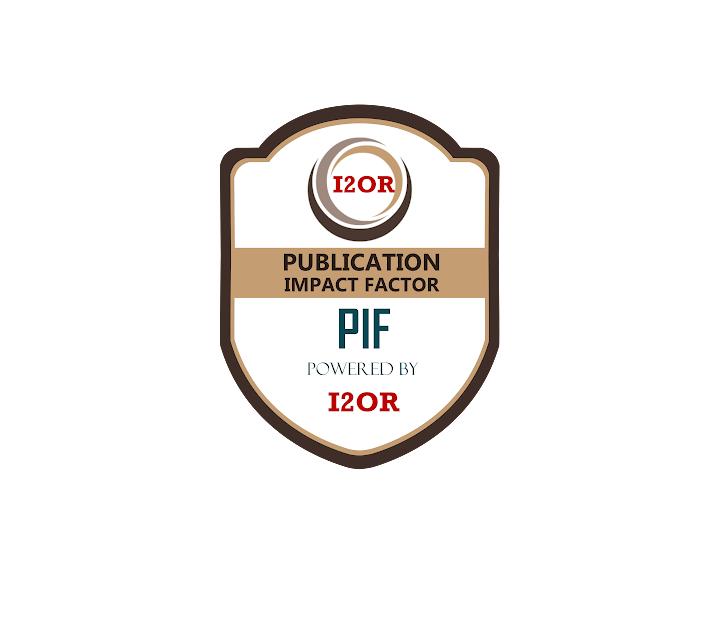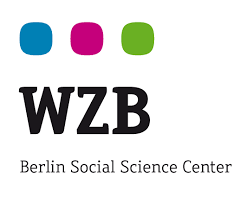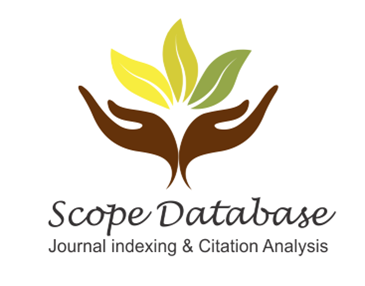ANALYSIS OF THE CORRELATION OF INFLAMMATORY CYTOKINES AND DIC IN POLYTRAUMATED PATIENTS
DOI:
https://doi.org/10.53612/recisatec.v2i6.148Keywords:
Multiple trauma, cytokines, Disseminated Intravascular CoagulationAbstract
Disseminated intravascular coagulation (DIC) is characterized by in vivo activation of the coagulation system, which results in intravascular deposition of fibrin and excessive bleeding. The polytraumatized patient suffers from systemic inflammation mediated by inflammatory cytokines. In this context, the objective of the present study is to relate inflammatory cytokines with the condition of disseminated intravascular coagulation in polytraumatized patients. The literature review was carried out from the survey of scientific articles found in the main search platforms for scientific articles: ScienceDirect, PubMed, SciELO and BIREME, from March 2021 to March 2022, using the descriptors: multiple trauma; cytokines; Disseminated Intravascular Coagulation. The systemic inflammatory response can be associated with DIC where cytokines and chemokines act as key mediators. There is ample evidence that there is considerable cross-talk between inflammatory activation and hemostatic activity. This interaction is bidirectional, so inflammation not only leads to activation of clotting, but activates clotting proteases that also importantly regulate inflammation. Changes in the concentrations of the cytokines G-SCF, Gro-α, IL-6, IL-8, IL-10 and MCP-1 correlated with the severity of the condition of polytraumatized patients, suggesting that these cytokines may be playing protective roles in the immunopathogenesis of polytraumatized patients and thus all these cytokines may be potential reliable biomarkers for predicting the development of CVID syndrome in patients with polytrauma.
Downloads
References
ADELBORG, K.; LARSEN, J. B.; HVAS, A.M. Disseminated intravascular coagulation: epidemiology, biomarkers, and management. British Journal of Haematology, v. 192, n. 5, p. 803-818, 2021. DOI: https://doi.org/10.1111/bjh.17172
APAGEORGIOU, C. et al. Disseminated intravascular coagulation: an update on pathogenesis, diagnosis, and therapeutic strategies. Clinical and Applied Thrombosis/Hemostasis, v. 24, n. 9_suppl, p. 8S-28S, 2018. DOI: https://doi.org/10.1177/1076029618806424
BEDET, A. et al. Mechanisms of thrombocytopenia during septic shock: a multiplex cluster analysis of endogenous sepsis mediators. Shock: Injury, Inflammation, and Sepsis: Laboratory and Clinical Approaches, v. 49, n. 6, p. 641-648, 2018. DOI: https://doi.org/10.1097/SHK.0000000000001015
DE MELO, I. S. F. et al. CANDIDA sp, UMA BREVE REVISÃO BIBLIOGRÁFICA. RECISATEC-REVISTA CIENTÍFICA SAÚDE E TECNOLOGIA-ISSN 2763-8405, v. 2, n. 5, p. e35129-e35129, 2022. DOI: https://doi.org/10.53612/recisatec.v2i5.129
DE ALMEIDA, C. E. R. et al. Traumatic brain injury epidemiology in Brazil. World neurosurgery, v. 87, p. 540-547, 2016. DOI: https://doi.org/10.1016/j.wneu.2015.10.020
DEKKER, A. E.; KRIJNEN, P.; SCHIPPER, I. B. Predictive value of cytokines for developing complications after polytrauma. World journal of critical care medicine, v. 5, n. 3, p. 187, 2016. DOI: https://doi.org/10.5492/wjccm.v5.i3.187
EFRON, P. A.; MOORE, F. A.; BRAKENRIDGE, S. C. Persistent inflammation, immunosuppression and catabolism after severe injury or infection. Annual Update in Intensive Care and Emergency Medicine 2018, p. 25-35, 2018. DOI: https://doi.org/10.1007/978-3-319-73670-9_3
FANG, Y. et al. Paeoniflorin alleviates lipopolysaccharide‐induced disseminated intravascular coagulation by inhibiting inflammation and coagulation activation. Drug Development Research, v. 81, n. 4, p. 517-525, 2020. DOI: https://doi.org/10.1002/ddr.21647
GANDO, S. et al. A multicenter prospective validation study on disseminated intravascular coagulation in trauma-induced coagulopathy. Journal of Thrombosis and Haemostasis, v. 18, n. 9, p. 2232-2244, 2020. DOI: https://doi.org/10.1111/jth.14931
GANDO, S. LEVI, M.; TOH, C.H. Disseminated intravascular coagulation. Nature Reviews Disease Primers, v. 2, n. 1, p. 1-16, 2016. DOI: https://doi.org/10.1038/nrdp.2016.37
GUISASOLA, M. C. et al. An overview of cytokines and heat shock response in polytraumatized patients. Cell stress and chaperones, v. 23, n. 4, p. 483-489, 2018. DOI: https://doi.org/10.1007/s12192-017-0859-9
HONORE, P. M. et al. Cytokine removal in human septic shock: where are we and where are we going?. Annals of intensive care, v. 9, n. 1, p. 1-13, 2019. DOI: https://doi.org/10.1186/s13613-019-0530-y
IBA, T. et al. The progression from coagulopathy to disseminated intravascular coagulation in representative underlying diseases. Thrombosis research, v. 179, p. 11-14, 2019. DOI: https://doi.org/10.1016/j.thromres.2019.04.030
ITO, T. et al. Thrombomodulin in disseminated intravascular coagulation and other critical conditions—a multi-faceted anticoagulant protein with therapeutic potential. Critical Care, v. 23, n. 1, p. 1-11, 2019. DOI: https://doi.org/10.1186/s13054-019-2552-0
JIANG, S. et al. Associations Among Disseminated Intravascular Coagulation, Thrombocytopenia Cytokines/Chemokines and Genetic Polymorphisms of Toll-Like Receptor 2/4 in Chinese Patients with Sepsis. Journal of Inflammation Research, v. 15, p. 1, 2022. DOI: https://doi.org/10.2147/JIR.S337559
JOHANSSON, P. I. et al. Disseminated intravascular coagulation or acute coagulopathy of trauma shock early after trauma? An observational study. Critical Care, v. 15, n. 6, p. 1-10, 2011. DOI: https://doi.org/10.1186/cc10553
KANY, S.; VOLLRATH, J. T.; RELJA, B. Cytokines in inflammatory disease. International journal of molecular sciences, v. 20, n. 23, p. 6008, 2019. DOI: https://doi.org/10.3390/ijms20236008
KHURANA, S. et al. Crosstalk between T Helper Cell Subsets and Their Roles in Immunopathogenesis and Outcome of Polytrauma Patients. Indian Journal of Critical Care Medicine: Peer-reviewed, Official Publication of Indian Society of Critical Care Medicine, v. 24, n. 11, p. 1037, 2020. DOI: https://doi.org/10.5005/jp-journals-10071-23577
LEVI, M. Pathogenesis and diagnosis of disseminated intravascular coagulation. International journal of laboratory hematology, v. 40, p. 15-20, 2018. DOI: https://doi.org/10.1111/ijlh.12830
LEVI, M.; SIVAPALARATNAM, S. Disseminated intravascular coagulation: an update on pathogenesis and diagnosis. Expert review of hematology, v. 11, n. 8, p. 663-672, 2018. DOI: https://doi.org/10.1080/17474086.2018.1500173
LUPU, F.; KINASEWITZ, G.; DORMER, K. The role of endothelial shear stress on haemodynamics, inflammation, coagulation and glycocalyx during sepsis. Journal of Cellular and Molecular Medicine, v. 24, n. 21, p. 12258-12271, 2020. DOI: https://doi.org/10.1111/jcmm.15895
NAMAS, R. A. et al. Insights into the role of chemokines, damage-associated molecular patterns, and lymphocyte-derived mediators from computational models of trauma-induced inflammation. Antioxidants & redox signaling, v. 23, n. 17, p. 1370-1387, 2015. DOI: https://doi.org/10.1089/ars.2015.6398
OSUKA, A. et al. Immune response to traumatic injury: harmony and discordance of immune system homeostasis. Acute Medicine & Surgery, v. 1, n. 2, p. 63-69, 2014. DOI: https://doi.org/10.1002/ams2.17
PATEL, P. et al. Markers of inflammation and infection in sepsis and disseminated intravascular coagulation. Clinical and Applied Thrombosis/Hemostasis, v. 25, p. 1076029619843338, 2019. DOI: https://doi.org/10.1177/1076029619843338
STOKOL, T. Disseminated intravascular coagulation. Schalm's veterinary hematology, p. 837-847, 2022. DOI: https://doi.org/10.1002/9781119500537.ch92
VAN BREUGEL, J. M. M. et al. Global changes in mortality rates in polytrauma patients admitted to the ICU a systematic review. World Journal of Emergency Surgery, v. 15, n. 1, p. 1-13, 2020. DOI: https://doi.org/10.1186/s13017-020-00330-3
VOGEL, M. et al. Distinct dynamics of stem and progenitor cells in blood of polytraumatized patients. Shock (Augusta, Ga.), v. 51, n. 4, p. 430, 2019. DOI: https://doi.org/10.1097/SHK.0000000000001198
VOLPIN, G. et al. Cytokine levels (IL-4, IL-6, IL-8 and TGFβ) as potential biomarkers of systemic inflammatory response in patients. International orthopaedics, v. 38, n. 6, p. 1303-1309, 2014 DOI: https://doi.org/10.1007/s00264-013-2261-2
WADA, T. et al. Disseminated intravascular coagulation immediately after trauma predicts a poor prognosis in severely injured patients. Scientific reports, v. 11, n. 1, p. 1-12, 2021. DOI: https://doi.org/10.1038/s41598-021-90492-0
WU, F. et al. Resuscitative Strategies to Modulate the Endotheliopathy of Trauma: From Cell to Patient: Resuscitation of the Endothelium. Shock (Augusta, Ga.), v. 53, n. 5, p. 575, 2020. DOI: https://doi.org/10.1097/SHK.0000000000001378
YAMAMOTO, A. et al. Soluble C-type lectin-like receptor 2 is a biomarker for disseminated intravascular coagulation. Journal of Clinical Medicine, v. 10, n. 13, p. 2860, 2021. DOI: https://doi.org/10.3390/jcm10132860
Downloads
Published
How to Cite
Issue
Section
Categories
License
Copyright (c) 2022 RECISATEC - SCIENTIFIC JOURNAL HEALTH AND TECHNOLOGY

This work is licensed under a Creative Commons Attribution 4.0 International License.
Os direitos autorais dos artigos/resenhas/TCCs publicados pertecem à revista RECISATEC, e seguem o padrão Creative Commons (CC BY 4.0), permitindo a cópia ou reprodução, desde que cite a fonte e respeite os direitos dos autores e contenham menção aos mesmos nos créditos. Toda e qualquer obra publicada na revista, seu conteúdo é de responsabilidade dos autores, cabendo a RECISATEC apenas ser o veículo de divulgação, seguindo os padrões nacionais e internacionais de publicação.





















































